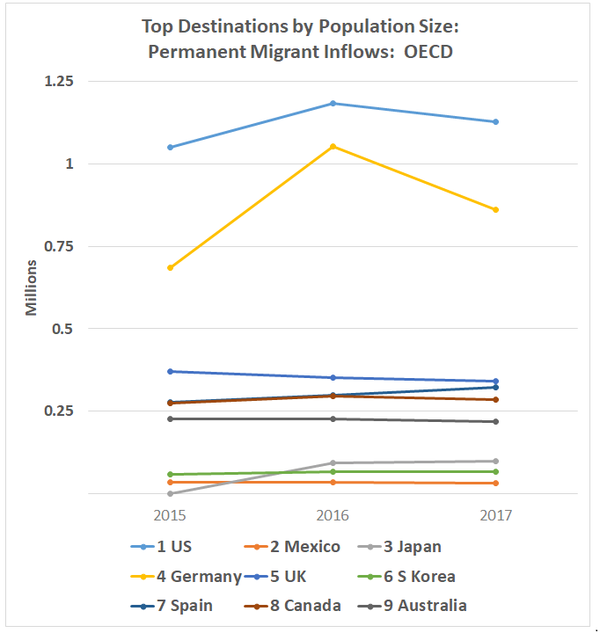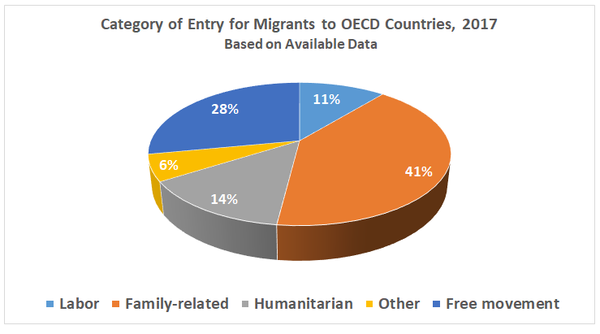Destinations for Migrants: OECD
Migration was up 2 percent for OECD countries in 2018, with 5.3 million new permanent migrants. European OECD nations combined receive the most permanent migrants; the United States is the top destination followed by Germany. Asylum seekers have declined, and most are from Afghanistan, Syria, Iraq and Venezuela. Countries continue to adjust migration procedures, with caps and ceilings, preference for investors and skilled labor, and emphasis on integration through language skills and skill assessment. Poland is the top destination for temporary labor migration followed by the United States. Fewer migrants received citizenship in most OECD nations. An improved global economy helps migrants: Almost 70 percent of migrants in OECD nations are employed, though youth and the unskilled face greater challenges in securing work. Citizens in receiving countries express concern about job and wage competition. For 2017, the number of students was down for the United States and up for the United Kingdom, Australia, Japan and Canada. China leads as the country of origin for students followed by India, Germany and South Korea. The report examines how delays in family reunification might affect integration as 54 percent of married migrants arrive the same year as their spouse. Delays can lead to lower wages when compared with migrants united with families, and the report notes; “Integration outcomes of migrant children can be strongly affected by long delays. Children who arrive at pre-school age can have substantially more favourable integration outcomes as adults than children who arrive at school age, in terms of educational attainment, employment, wages and especially host-country language proficiency.” – YaleGlobal
Destinations for Migrants: OECD
Migration to OECD nations rises, with the US and Germany as top destinations; humanitarian migration falls while family and labor migration rise
Thursday, September 19, 2019
Read the report “International Migration Outlook 2019” from the Organisation for Economic Cooperation and Development.


(Source: OECD)
© 2019 YaleGlobal and the MacMillan Center